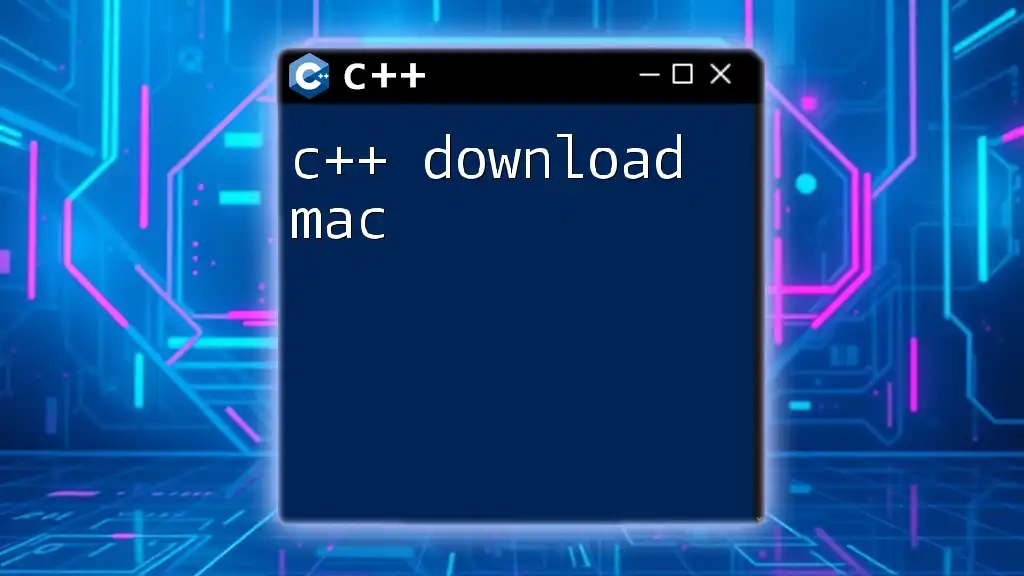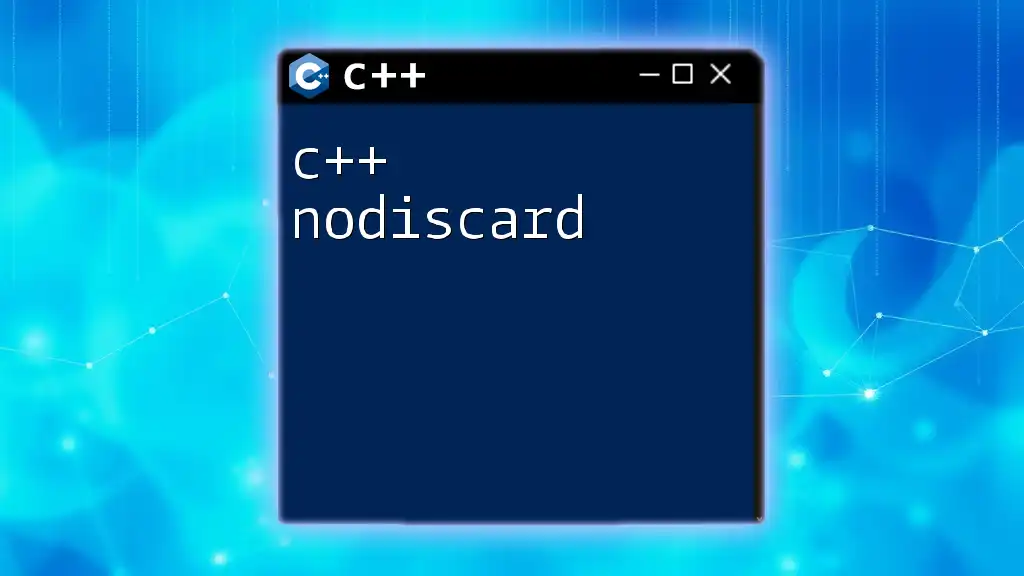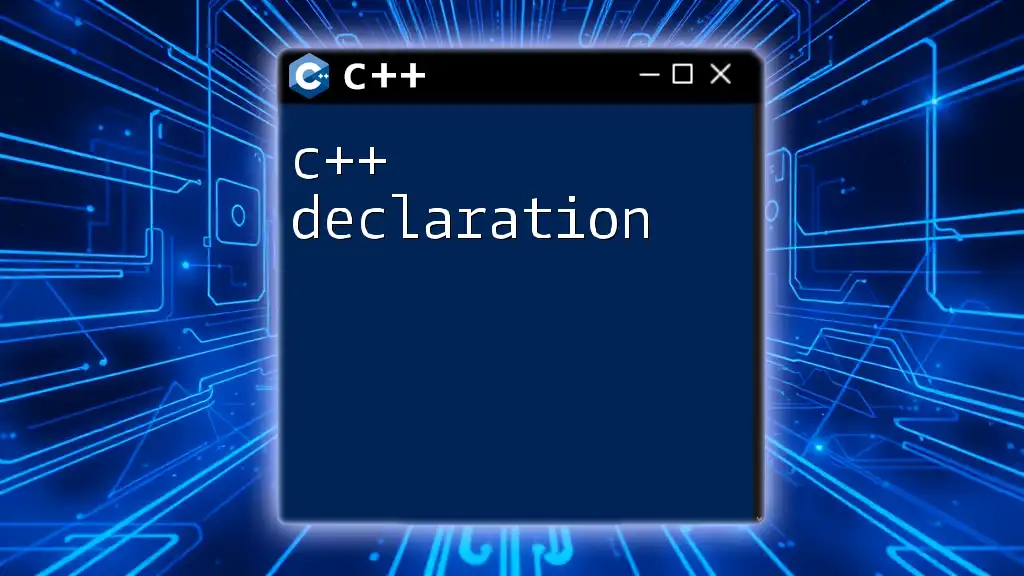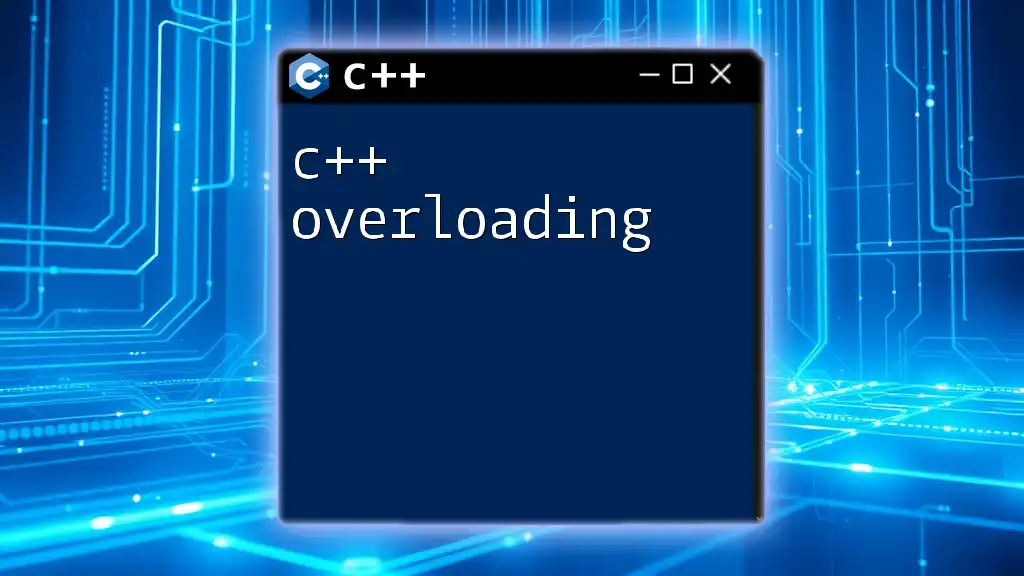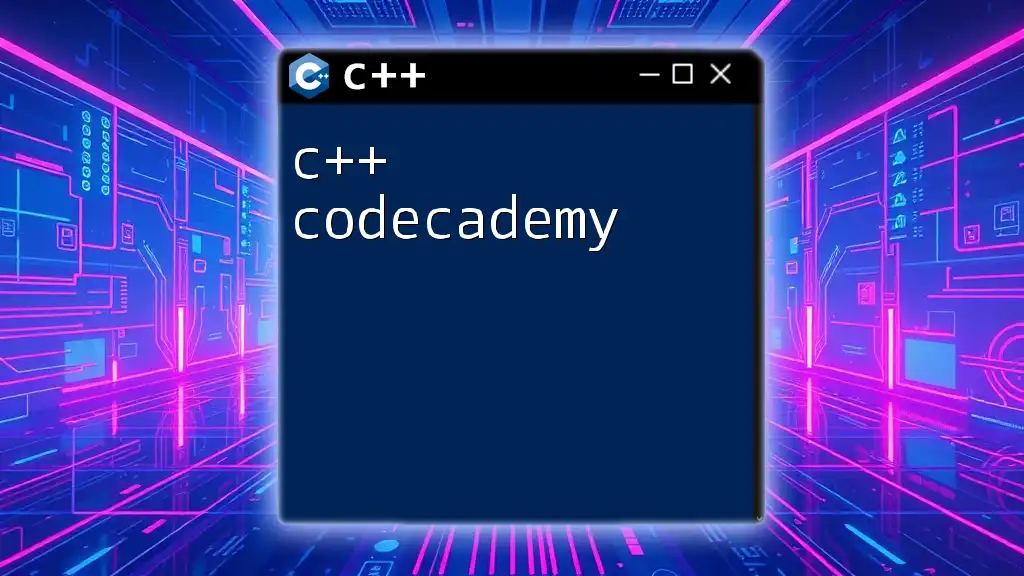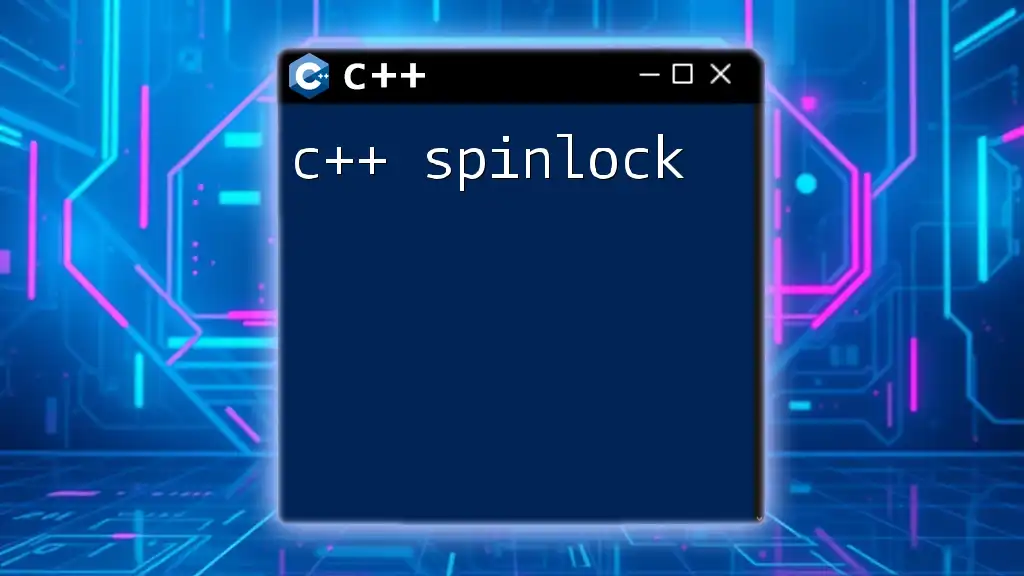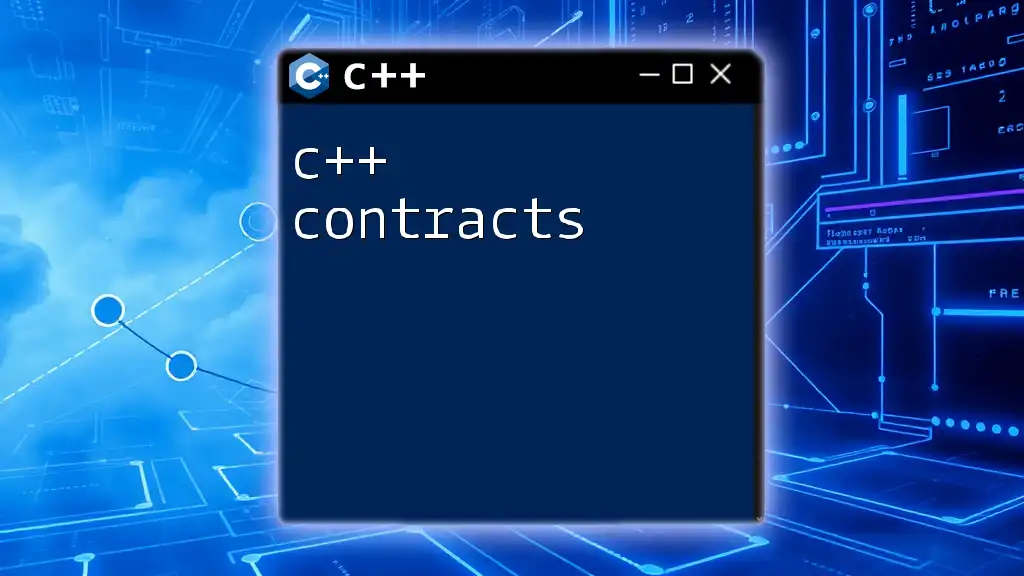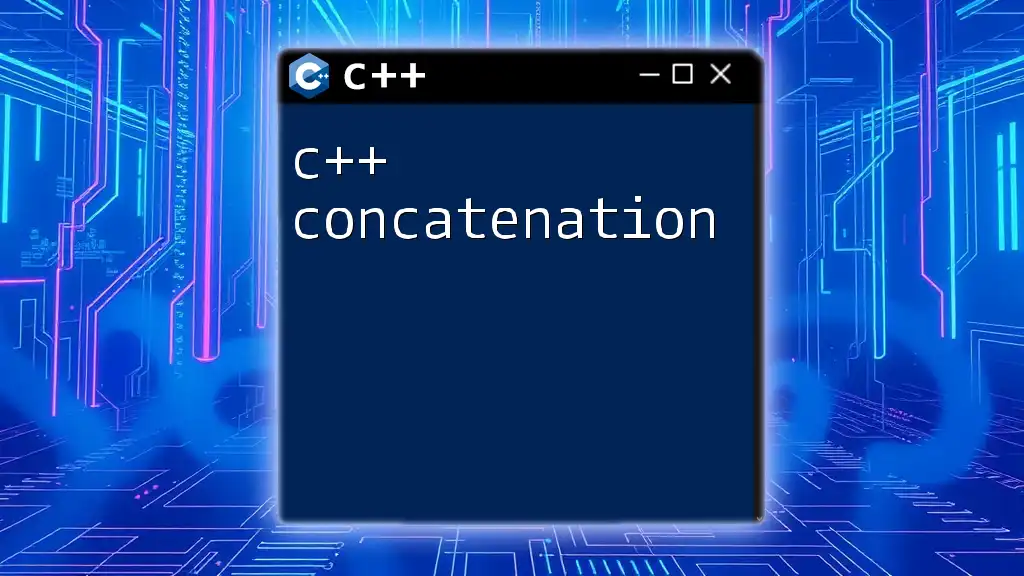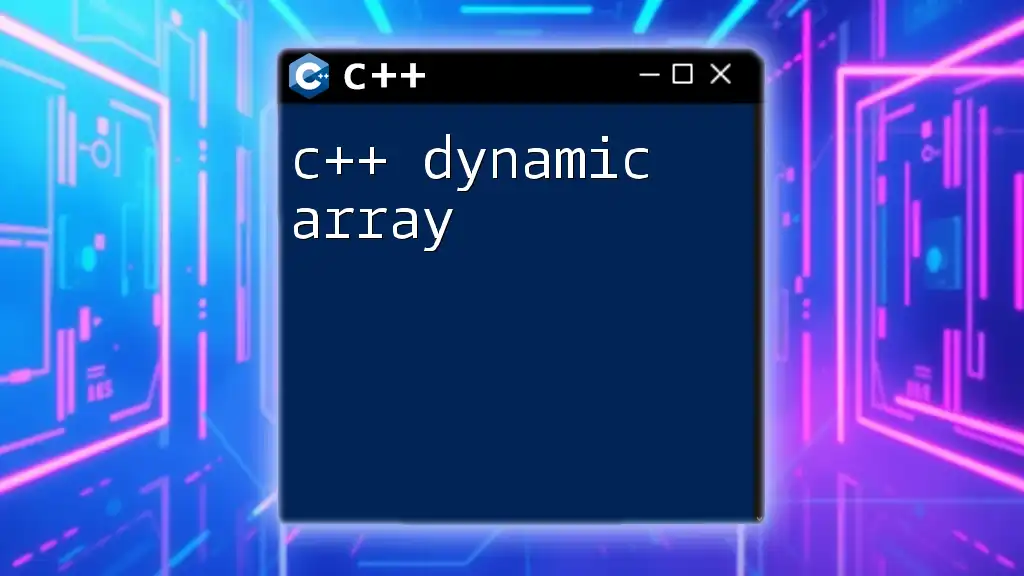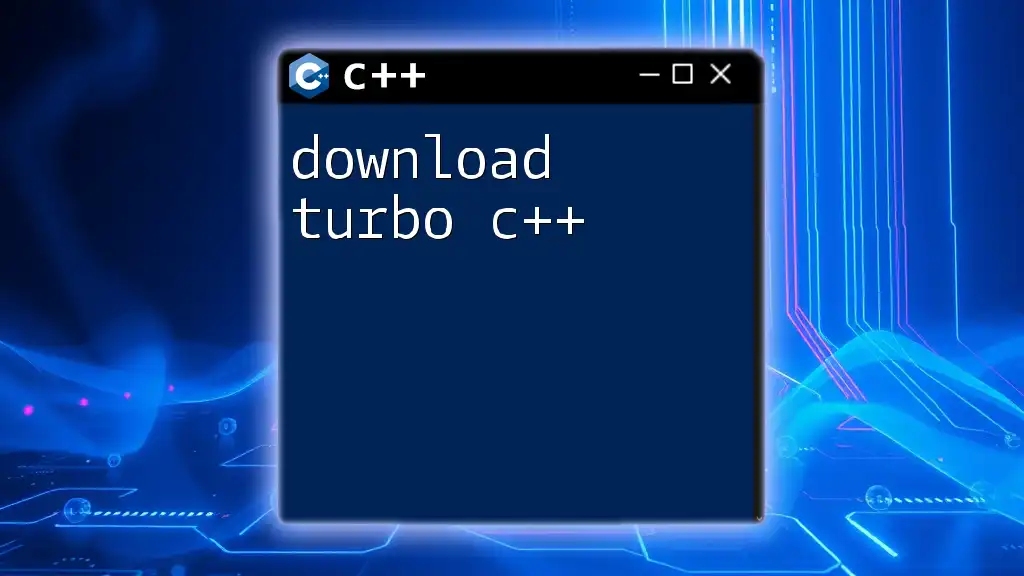To download and set up C++ on a Mac, you can use Homebrew by executing the following command in your terminal:
brew install gcc
Understanding C++ and its Uses
What is C++?
C++ is a powerful, high-performance programming language that extends the capabilities of the C programming language. Initially developed by Bjarne Stroustrup in the late 1970s, C++ introduced features such as classes and objects, enabling object-oriented programming. Its flexibility makes it suitable for a range of applications, from system software and game development to high-performance computing.
Why Learn C++?
Learning C++ has numerous benefits:
- Versatility: C++ can be used in various domains, including game development, embedded systems, operating systems, and high-performance applications.
- Performance: C++ offers low-level memory manipulation capabilities, making it one of the fastest programming languages. This performance can be crucial for resource-intensive applications.
- Job Opportunities: C++ remains in high demand in the tech industry. Companies involved in system-level programming, finance, gaming, and real-time system development often seek proficient C++ developers.
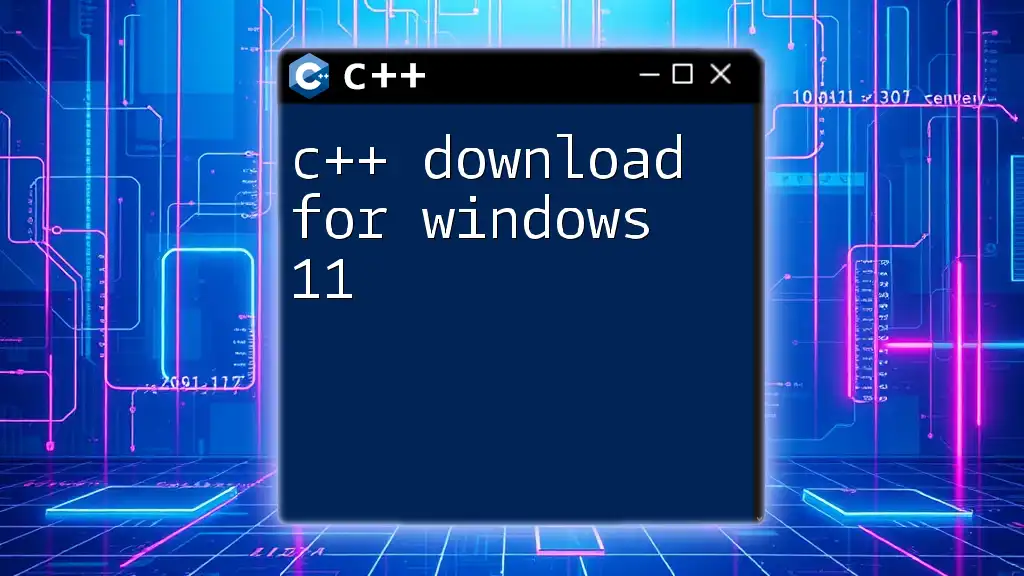
Preparing to Download C++ on Mac
Choose Your Development Environment
When you embark on your journey to learn C++, you must choose an Integrated Development Environment (IDE) or text editor that suits your needs. Some popular options for Mac include:
- Xcode: Apple's official IDE for macOS, excellent for C++ and other programming languages.
- CLion: A powerful cross-platform IDE by JetBrains, designed specifically for C and C++ development.
- Visual Studio Code: A lightweight yet robust code editor that can be customized for C++ development with various extensions.
Mac OS System Requirements
Before downloading C++, ensure your Mac OS version is compatible. Ideally, you should be running macOS Mojave (10.14) or later. Additionally, you may need to install Apple's Command Line Tools, which provide a suite of essential tools and libraries for compiling code.

How to Download C++ on Mac OS
Step-by-Step Guide for Downloading
Using Xcode
To use C++ on macOS, Xcode is an excellent choice, as it supports C++ out of the box.
-
Installing Xcode: Open the App Store, search for "Xcode," and click "Get" to download and install it.
-
Verifying Installation: After installation, open the Terminal and run the following command to check if the compiler is available:
g++ --version
This command should display the version of the GNU C++ compiler installed with Xcode.
Using Homebrew
Homebrew is a popular package manager for macOS, allowing you to easily manage software installations.
-
Installing Homebrew: Open the Terminal and run the following command:
/bin/bash -c "$(curl -fsSL https://raw.githubusercontent.com/Homebrew/install/HEAD/install.sh)" -
Installing g++ via Homebrew: After Homebrew is installed, you can install g++ by executing:
brew install gcc -
Verifying Installation: Confirm that g++ is installed by running:
g++ --version
Using Other IDEs
If you prefer IDEs like CLion or Visual Studio Code, follow these steps:
-
CLion Setup Instructions: Download CLion from the JetBrains website and follow the setup wizard. CLion will automatically manage the necessary compilers, including C++.
-
Visual Studio Code Setup Instructions: Download Visual Studio Code from its official website. After installation, open the editor and search for extensions like "C/C++" from Microsoft to enable C++ support.
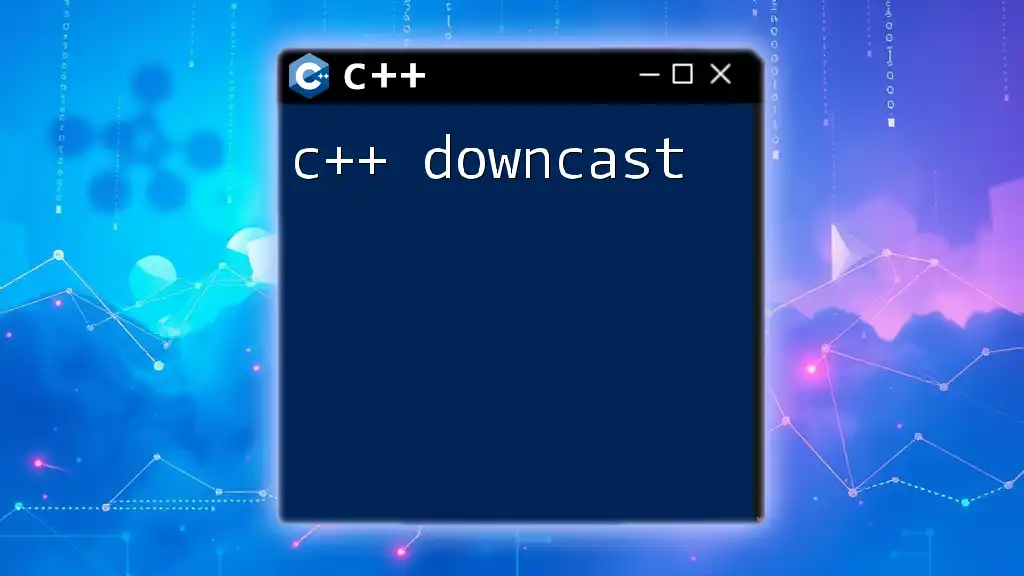
Writing Your First C++ Program on Mac
Setting Up a Project
For your first C++ project, you can choose any of the IDEs mentioned earlier. Create a new C++ project by selecting the appropriate project type in your chosen IDE.
Example: Hello World Program
Here’s a simple C++ program to get you started:
#include <iostream>
int main() {
std::cout << "Hello, World!" << std::endl;
return 0;
}
In this program:
- We include the `<iostream>` header to access input/output stream functionalities.
- The `main()` function serves as the entry point for every C++ program.
- `std::cout` is used to print the text "Hello, World!" to the console.
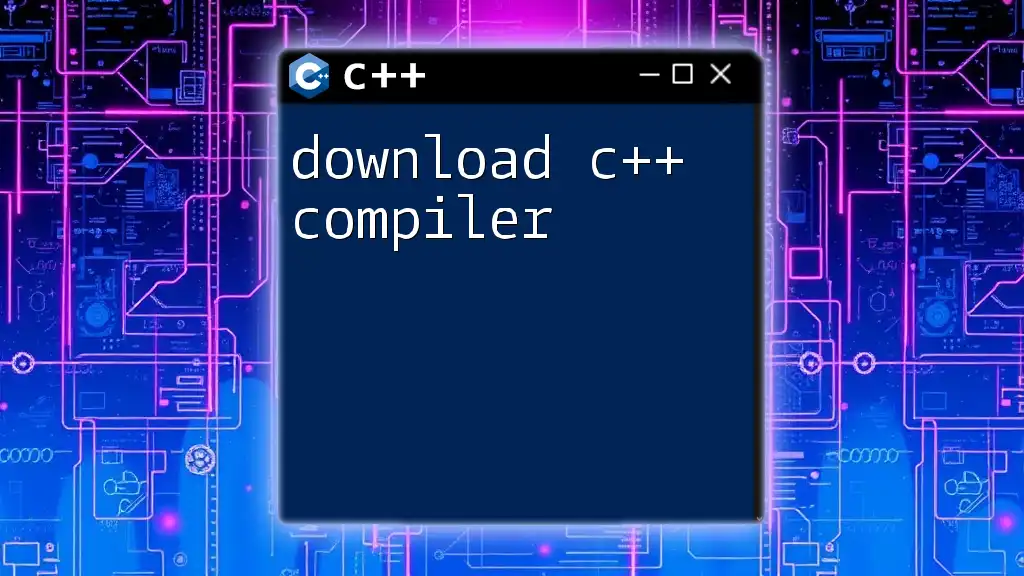
Compiling and Running C++ Code
Compiling in Xcode
To compile and run your C++ program in Xcode, simply click the "Run" button in the toolbar. Xcode automatically builds your project and executes it.
Compiling in the Terminal
For users who prefer the command line, you can compile your program using Terminal. Assuming you've saved your `hello.cpp` file on your desktop, follow these steps:
- Open Terminal.
- Navigate to the directory where your file is located:
cd ~/Desktop - Compile the program with g++:
g++ hello.cpp -o hello - Run the compiled program:
./hello
Compiling in Other IDEs
For IDEs like CLion and Visual Studio Code, you can run the program through the "Run" commands integrated within the environment, which typically handle the compilation automatically.
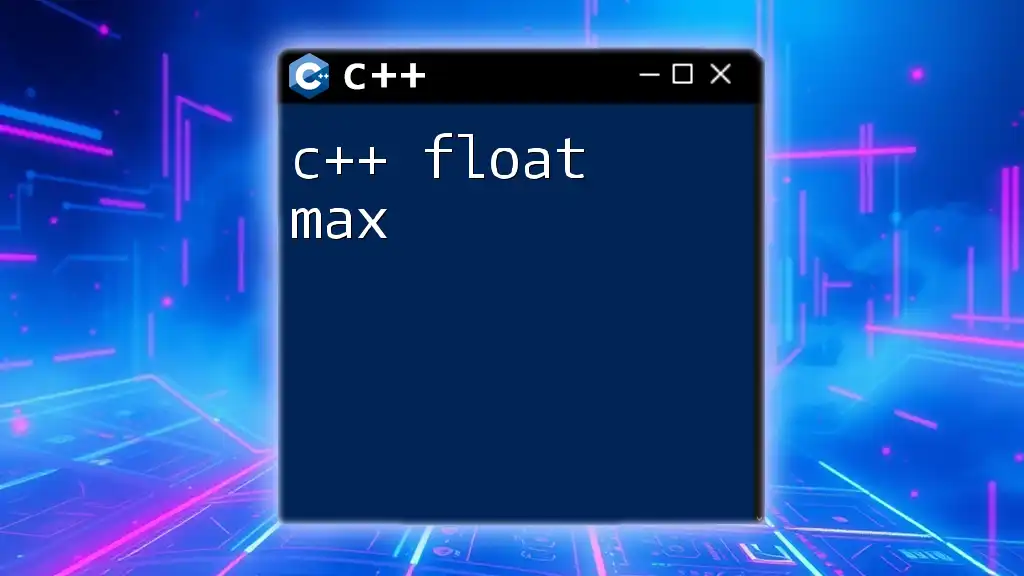
Troubleshooting Common Installation Issues
Compiler Not Found
One common issue is encountering the "compiler not found" error. Ensure that Xcode is properly installed, and you have agreed to the Xcode license agreement. You can do this by running:
sudo xcodebuild -license
Compatibility Issues with Mac OS
If you're facing compatibility issues, make sure your macOS is updated to a version that supports the tools you're trying to install. Sometimes, installing an update for Xcode or the Command Line Tools can resolve these issues.
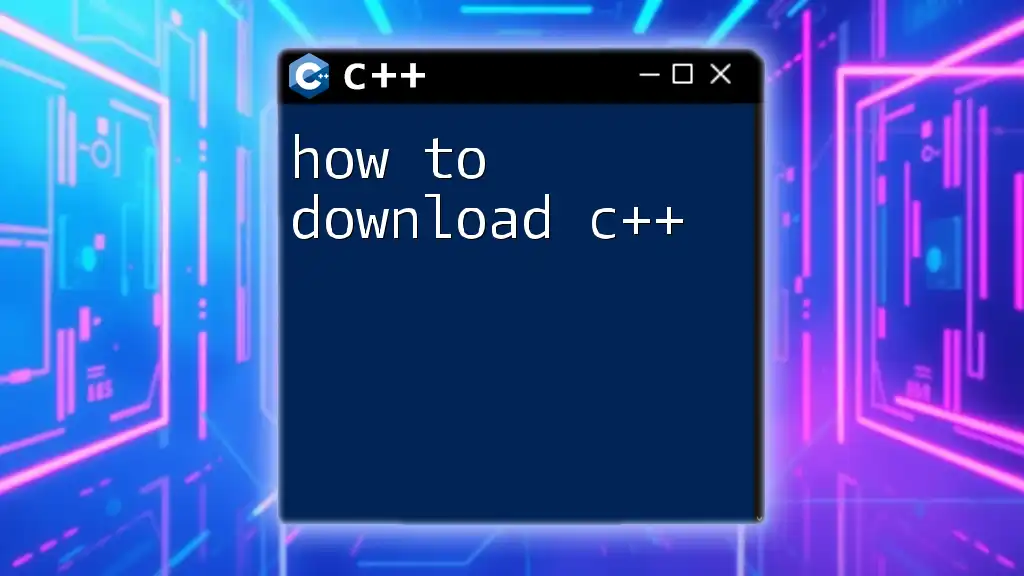
Conclusion
Installing C++ on Mac is a crucial first step in your programming journey. With the right environment set up, you can dive into learning and coding with C++. Make use of the resources available and don’t hesitate to experiment with your newly acquired knowledge.
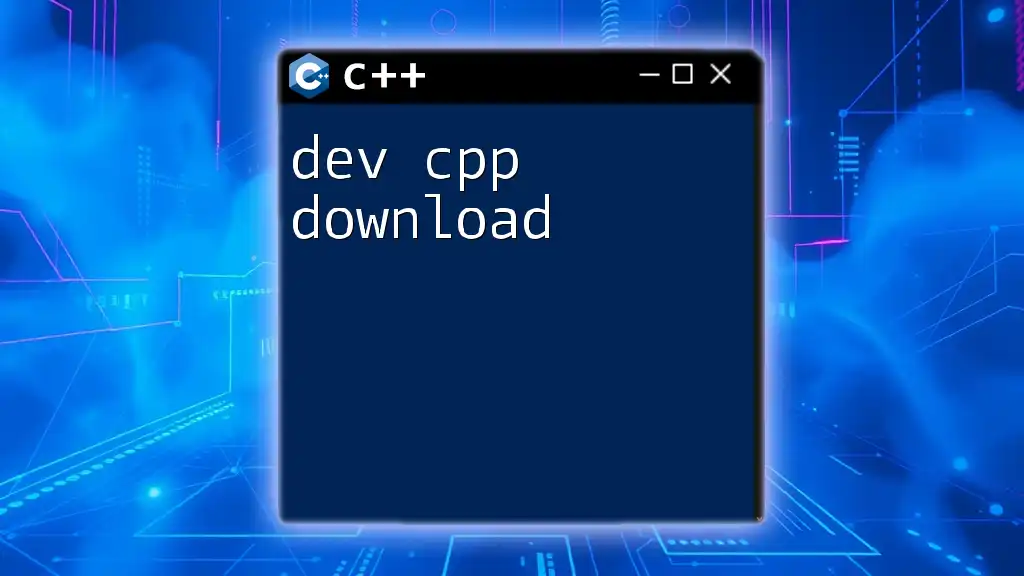
Call to Action
Ready to take your C++ skills to the next level? Check out our services for more resources, tutorials, and tips on mastering C++ quickly and effectively!

